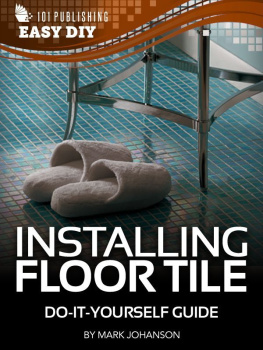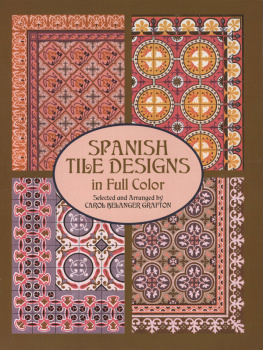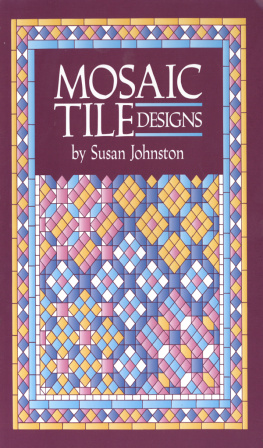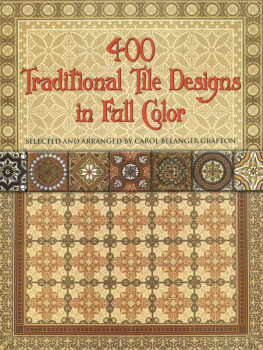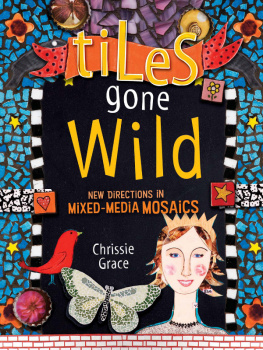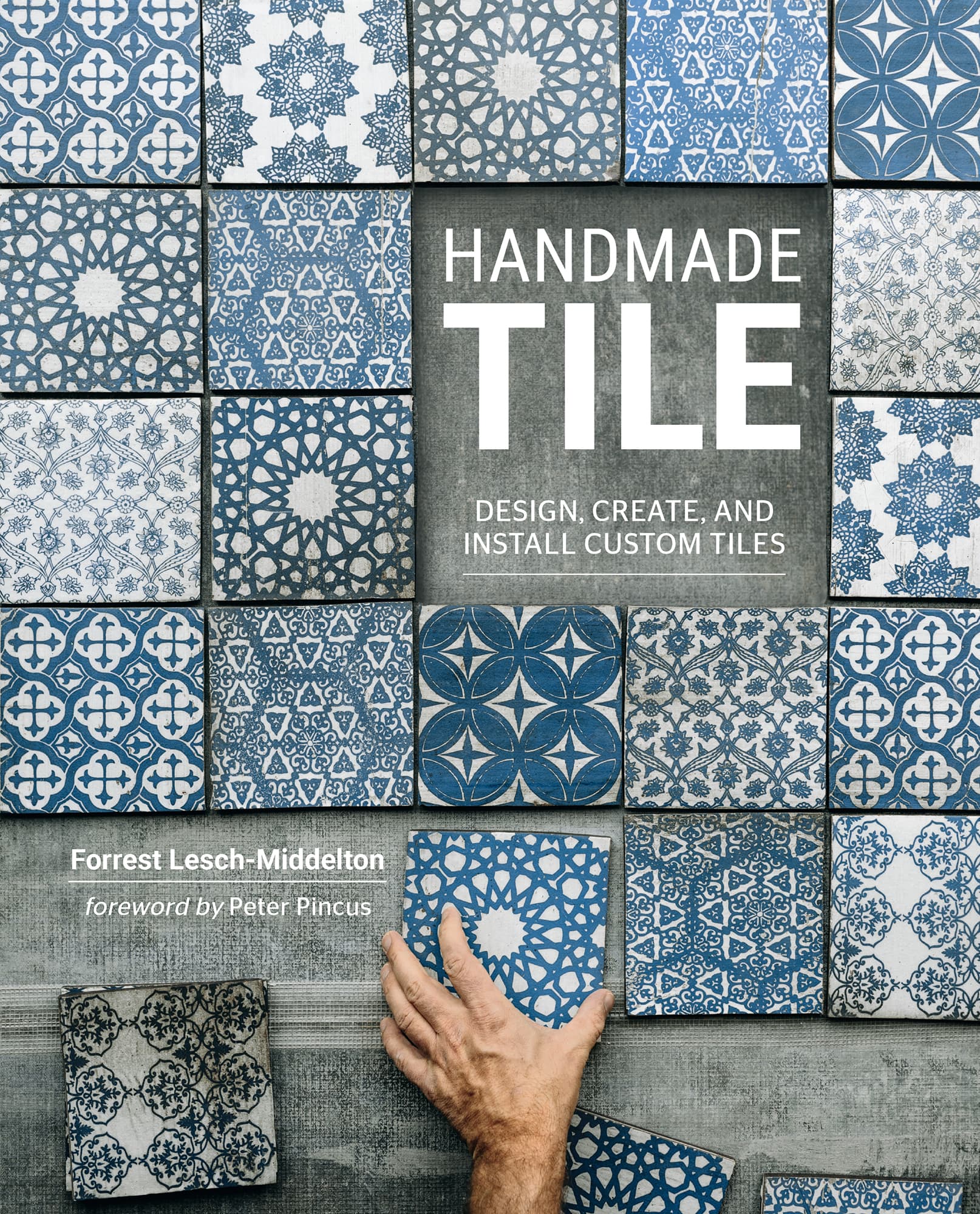HANDMADE
TILE
DESIGN, CREATE, AND INSTALL CUSTOM TILES
Forrest Lesch-Middelton

Foreword
Lets begin by acknowledging that tile production can be a maddening affair. Consider the difficulty of making a flat piece of clay stay level and true through the drying and firing process. Then imagine repeating the task thousands upon thousands of times in an effort not unlike that of Sisyphus, the doomed king of Greek mythology.
Such was my viewpoint on tile for the first fifteen years that I worked in clay. I had tried to produce tile, but I did so without finding a resource like this one to guide me. Frustration with my lack of technical understanding clouded my ability to acknowledge the potential of ceramic tile as a medium and, further, to see its relevance to my own artistic practice. I was entirely disinterested in the process as a result.
That changed upon seeing two bodies of work by Cary Esser at Sherry Leedy Contemporary Art in 2016. Not only had the artist disregarded the concerns about process that had stifled me, she used them to great success. In her Parfleche series, Cary allowed tile to bend and collapse with such grace, restraint, and fluidity as to reveal the poetics of architecture. In veils, shown alongside the former, she used flat tile as a canvas for a deeply moving expression of the virtues of glaze. Carys work proved so transcendent that it radically altered my perceptions of tile. With newfound interest, I tried again.
It is essential that we as artists disassociate how something is made from what it is and why it is significant. To study tile is to study language, a language used in the histories of architecture, religion, politics, beauty, and so much more. To make tile in your studio is to engage in a global conversation that spans the entirety of constructed things, both in art and in industry. Dont feel hinderedas I did for over a decadeby the technical hardships inherent in trying something new. Instead, feel enlivened by the challenge of problem solving and the opportunity to be part of the conversation.
One of my lifes great privileges is my friendship with Forrest Lesch-Middelton. Because our studios are (only) 2,700 miles (4,345 km) apart, our relationship is confined to frequent phone conversations. These treasured discussions often indulge our common interests in music and parenting but just as frequently center on ceramics, politics, and ideas of communication through our work.
Through our friendship Ive come to understand how Forrest works, and more importantly, why he works. Forrest has a remarkable appreciation for the history of Islamic tile as an expression of culture. He draws upon this knowledge daily for reasons as simple as the celebration of aesthetics and as complex as developing collective understanding of who we are individually and globally. Forrest has the determination to build a new sense of community from that understanding.
Forrests studio practice and the quality, consistency, and volume with which he produces tile greatly impress me. The ambitious projects that he has completed and the late nights he still endures for the National Council on Education for the Ceramic Arts (NCECA) exhibitions and commissions motivate me, as they should us all. A true renaissance man, Forrest is as exceptional a harmonica player as he is a potter, and as passionate a social activist as he is a designer. His days are packed to the brim with exciting, challenging, and otherwise inspiring creative activitiesnot the least of which is this book!
Peter Pincus, ceramic artist, assistant professor of art at the College of Art and Design at Rochester Institute of Technology
Introduction
I often hear stories of how clay changed the lives of my friends and colleagues. For me, its no different. I would be a completely different person had I not encountered clay: It captivated my mind, occupied my hands, populated my senses, and set me on a path that defined who I am. Along that path there have been many twists and turns, but none so transformative as tile. I started my career as a potter, making vessels. I first discovered tile when I started making single tile designs as one-offs for craft shows. Little did I realize, tile would quickly come to stand shoulder to shoulder with vessels. As my career pivoted to making tile, I found it challenged my notions of surface, scale, economy, and design in ways I could not have previously imagined.
In this book, Ill outline much of what I wish I had known when I stumbled headlong into the world of tile with only an academic knowledge of the craft. Admittedly, this book cannot do it all. It is not meant to be the bible on making tile. Tile has a rich history and it would take another book (actually, multiple books!) to cover it all. In the pages that follow, what youll find is a useful primer. Its a survey of techniques, ideas, and tips that will help you move confidently from inspiration to realization. Through these chapters, you will develop an idea, put it into context, assess the viability of your project, and install the tile in a lasting and thoughtful way. It will be your guide in problem solving and act as a doorway into further exploration.
The first chapter starts with the basics, taking a quick look at the history of tile as well as the difference between tile made by industry and by hand. Moving on, well go through the basics of clay and considerations to keep in mind when making tile. A variety of tutorials will help you create your first tiles, whether youd like to use a slab roller, an extruder, or roll them by hand. The next chapter will look at the surface of tile, including techniques for glazing, image transfer, and cuerda seca. It will also cover firing considerations. Before getting into installation, well take a detour to examine how tile fits in the context of a space. Finally, we will work our way through installation, including setting, grouting, and sealing.
Throughout the book, youll find artist features showcasing some of the innovative people making tile today. No matter where you start, or what project youre looking to create, I hope that the information on these pages helps you on your way. Keep an open mind, find inspiration, and enjoy all the possibilities offered by tile.
CHAPTER 1
The Basics
Its true that, in its most basic definition, ceramic tile is a slab of clay cut into a shape and used as a means of decorating and protecting a surface. However, tile can also be a window through which we can glimpse our own history.
I admit that when I first started making tile, I didnt have a clear understanding of which lens to view it through. Although I encountered tile on a daily basis, it was rarely something I noticed. I soon found that if you pay attention, you will see that tile can tell a story. First you must understand the language of tile to understand what it has to share.
In this chapter, we'll take a brief look at tiles history, well learn key terminology that will be important throughout the book, and well also examine a few key types of tile as well as a handful of common setting styles. Though its impossible to provide a complete crash course in the history of tile, my hope is that this chapter will begin to change your perspective, so you, too, will fall in love with this unique medium.


